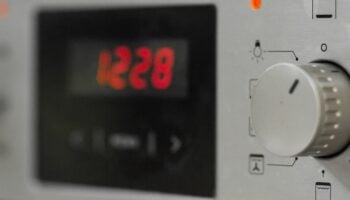Stuck trying to figure out why your oven won’t turn on?
That sucks! I know how annoying it can be when your oven stops working, especially when you’re entertaining.
But don’t worry; I’m here to help.
If your oven won’t turn on, there’s likely a problem with the bake element, igniter, or spark electrode. A faulty thermal fuse, circuit board, or gas safety valve could also explain the issue.
Read on to get your oven working again!
Oven Won’t Turn On? 7 Reasons Why (With Fixes)
In this section, I’ll guide you through the most common reasons why your oven doesn’t turn on and provide different simple solutions.
#1 Power Issues
When I see an oven not turning on, I always check the power supply.
Please check if your oven is properly connected and inspect the power cord. Then, go to the circuit breaker box and check if the breaker has tripped.
If it has, turn the breaker to the “On” position again. But, if the breaker didn’t trip, turn it off, wait for five minutes, and then turn it back on again to reset it.
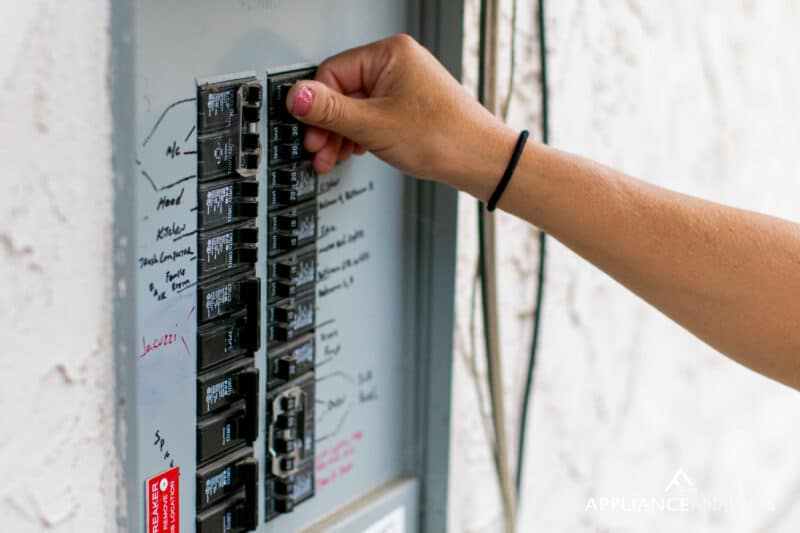
#2 Faulty Bake Element
If your oven won’t turn on, you’ll need to check the bake element.
You see, the bake element generates heat for the rest of the oven. When it is working properly, it glows red hot. But if it has become burned out, it will keep your oven from turning on.
If you set your oven to bake and it’s not heating up, you likely want to replace the bake element.
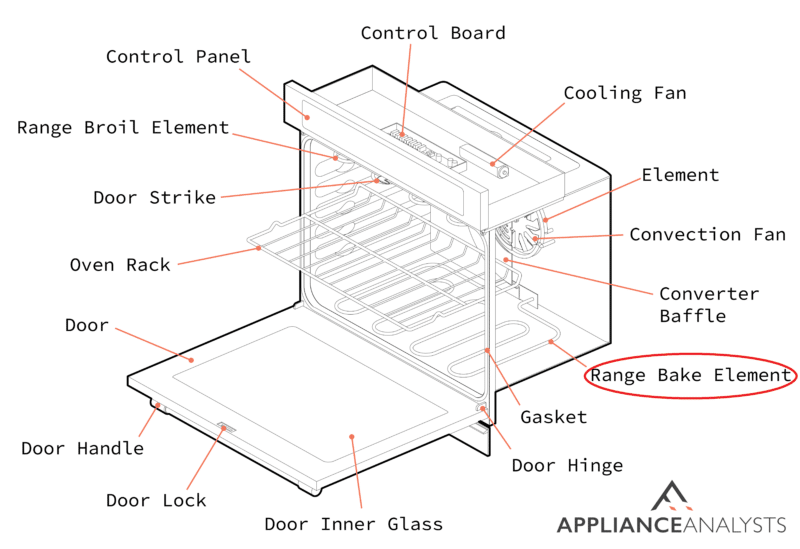
If you want to be sure then you can use a multimeter to test the electricity going through the element – but it’s a pretty safe bet you should order a new part.
If that’s the case, don’t worry! They’re super cheap and easy to replace. Keep an eye out for our guide coming soon.
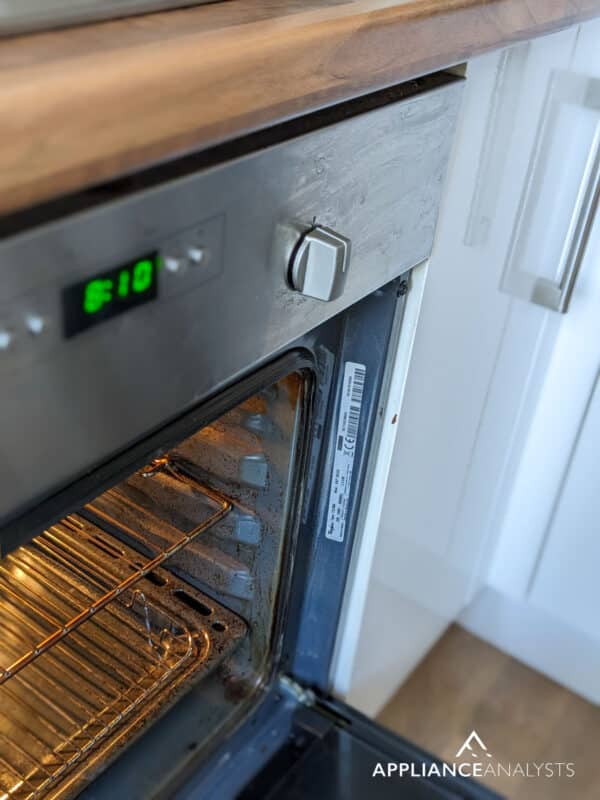
Once you have the model number, I recommend going to AppliancePartsPros and enter the model number there. Then your exact oven model will popup, and you can just choose a replacement bake element from there.
There’s plenty of videos on YouTube showing you how to replace one, and I’ll upload our own version soon!
#3 The Igniter Is Dead
I tend to find that when a gas oven doesn’t turn on, it’s typically because there’s an issue with the igniter.
The igniter draws an electrical current through the safety valve, opening it. It is also responsible for igniting the gas in the burner.
Since you are dealing with an open gas source, you need to shut off the gas to the oven before you work on the igniter.
To determine if there’s a problem with the igniter, look at it when you turn the oven on. Does the igniter look like it is doing anything? Or does it look like it is having difficulty getting the oven to turn on? If you notice it is the latter, you’ll need to repair or replace the igniter.
If you do not have experience working with a gas oven, reach out to a professional who can address the problem.
#4 There’s an Issue With the Spark Electrode
If your oven turned off and won’t turn back on, there’s probably something wrong with the spark electrode.
You should look at the electric assembly system to see if any cracks are present. Usually, your electrode is sitting in a porcelain hose. If there are cracks in the system, the electrode will not behave properly.
My usual advice is to test the electrode with a multimeter. If you don’t get any current through the electrode, please replace it.
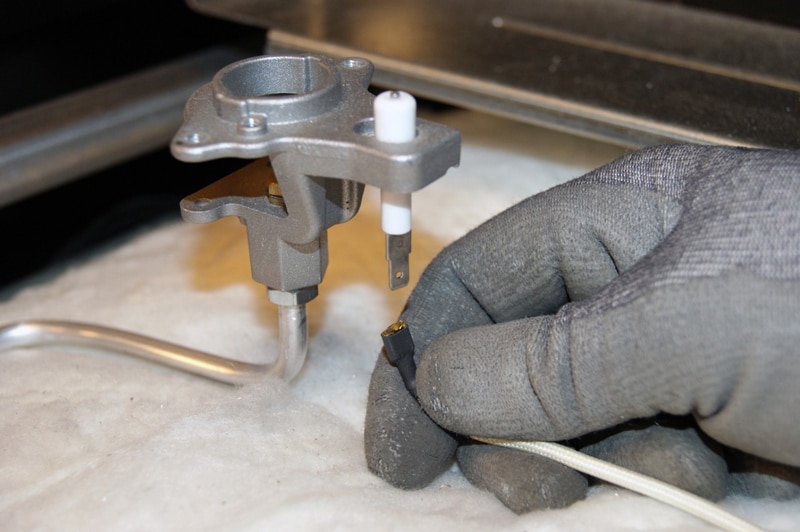
Fortunately, fixing the spark electrode is usually not expensive. But if you feel uncomfortable doing so, please call a professional.
#5 The Thermal Fuse Has Blown
When fixing an oven that doesn’t turn on, it’s also important to check the thermal fuse.
Your oven has a defensive mechanism that prevents it from overheating. If the thermal fuse senses that your oven is overheating, it will trip, causing the oven to turn off.
If the thermal fuse has already blown, the oven will not turn on.
From what I’ve seen, another reason your oven doesn’t turn on is that the thermal fuse trips when it’s not supposed to. In such cases, you must test the thermal fuse using a multimeter. If you find that a thermal fuse has no power going to it, it is not working properly. As a result, you will need to replace it.
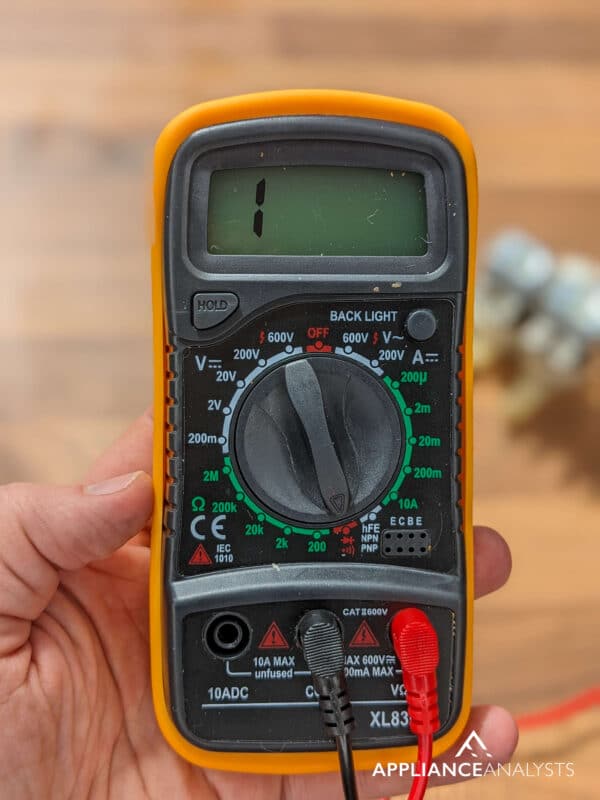
#6 The Gas Safety Valve Has Failed
If you have a gas oven that keeps refusing to turn on, I suggest checking the gas safety valve because if it’s faulty, it can prevent gas from flowing into the oven even when turned on.
I recommend testing the gas safety valve with a multimeter. It should have power flowing to it. If it’s faulty, you’ll need to replace it.
Keep in mind that it can be difficult for you to find the right safety valve. So, please look at the manual to see what type of safety valve you require and follow all the safety precautions when replacing it.
If you want to get any replacement part – or see how much one would cost – click to enter your model number in the search bar below. Our partners at AppliancePartsPros stock almost every part with free guides on how to install them.

#7 The Oven Control Board Is Not Behaving Properly
Usually, when I fix an oven that won’t turn on, I check the control board.
The control board has a wide variety of relays responsible for sending signals to the oven’s various functions, including your baking and broiling system and any other settings.
A defective control board will not send signals to the rest of the oven, keeping it from turning on.
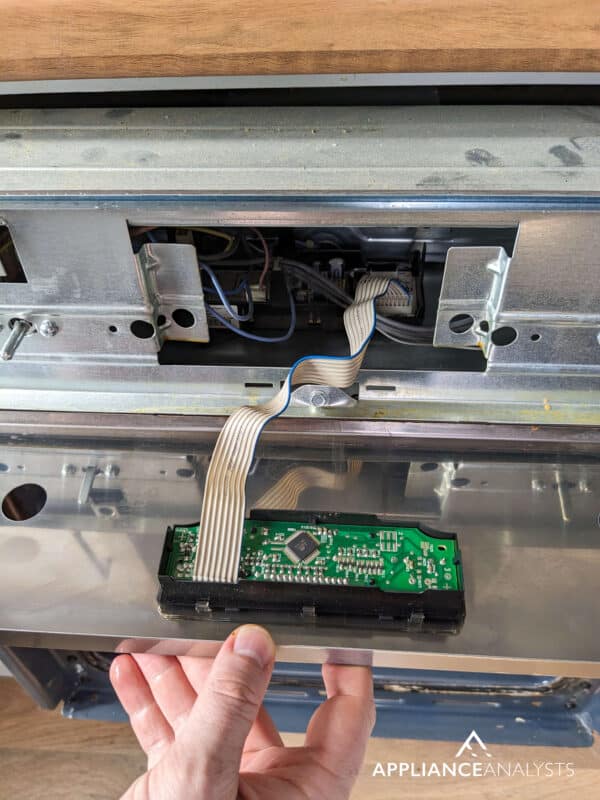
If you need a new control board for your oven, please check the total cost of the repair. Because the control board is an integral part of an oven, getting an entirely new oven can be better.
Frequently Asked Questions About an Oven Not Turning On
A few of the most common questions people have about an oven not turning on include:
Is It Worth It for Me to Repair an Oven That Is Not Turning On?
It depends on the exact problem you are having with your oven. In some cases, parts are not that expensive to find.
In other cases, you’ll need to spend a lot of money to replace a defective part, such as an oven control board. Ensure you get quotes on the price of the repair before you decide if it’s worth it.
How Expensive Is It to Replace an Oven That Will Not Turn On?
It depends on the brand, features, and type of oven you want. Ovens come in all shapes and sizes. In my experience, it is not unusual for a good oven to cost more than $1,000.
Summing Up: Steps to Revive Your Oven
Hopefully, now you’ll be able to solve your oven issues.
Remember, if your oven won’t turn on, you’ll need to check the bake element, igniter, spark electrode, and thermal fuse. Don’t forget to ensure the control board and gas safety valve are working correctly.
To reduce the chances of developing problems, inspect your oven periodically to ensure everything behaves as it should.
Thanks for taking the time to read this quick guide! Please look at a few related articles below to learn more about ovens.
Good luck!







